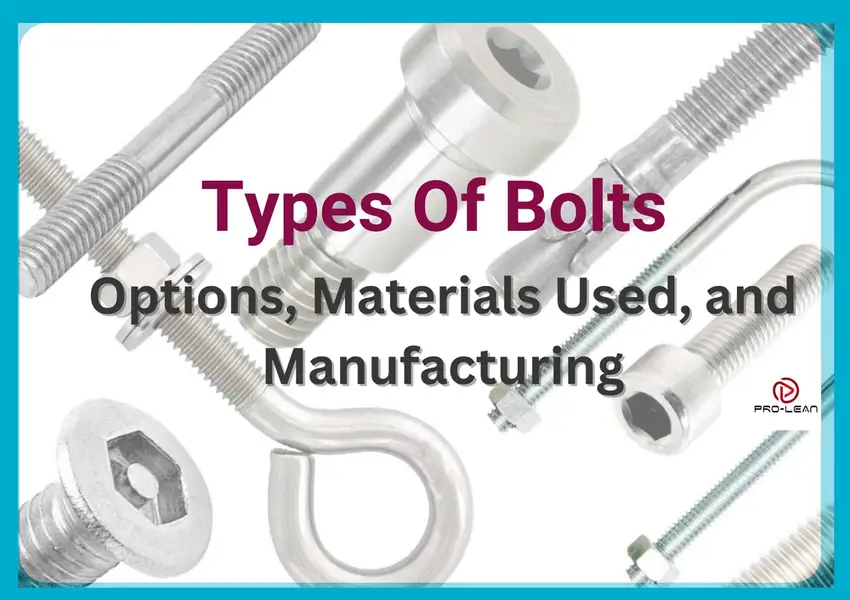
Types of bolts
Many sectors rely on frameworks that carry substantial loads and stresses. Be it infrastructure, construction, marine, or land-based transport, the need for different types of bolts to fasten pieces is significant.
A bolt may appear simple, but the threaded shaft with a head plays a significant role in securing sections of assemblies. The head of the bolt, which can assume any shape, applies the torque. Below the head is the shank, then beneath it is the threaded part.
While this defines the fundamental design of a bolt, there are different types which can present in different shapes, designs, and sizes. One question for any project is, what is the ideal type of bolt? The answer depends on the types available and the project requirements.
Bolt types such as hanger bolt, hex bolt, carriage bolt, and arbor bolt are viable options. There are also material considerations involving titanium, stainless steel, steel, brass, and others.
When you want to have all these considerations in place and the best CNC machining for the bolts, the services at ProleanTech are worth considering. This article is about these bolt options and related tips for the best parts.
What Is A Bolt?
A bolt is a mechanical fastener mainly made up of a head and threaded grooves. It is used together with a nut to lock two parts or components together. The structure of a bolt is simple: A head and a shaft.
There are different shapes and sizes for the head. The same dynamism applies for the shaft and related parts such as the type of nuts for bolts. Often, the shaft has a threaded and unthreaded part.
What Are The Parts Of A Bolt?
Every industry uses bolts in one way or another. Being an essential part of fabrication and general fastening in so many fields, the bolt is worth unpacking in more detail.
That’s why before we proceed, we need to look at the basic anatomy of this fastener, which comprises the head, shank, thread, washer, and nut. The basic parts are as shown in the picture of a bolt below.
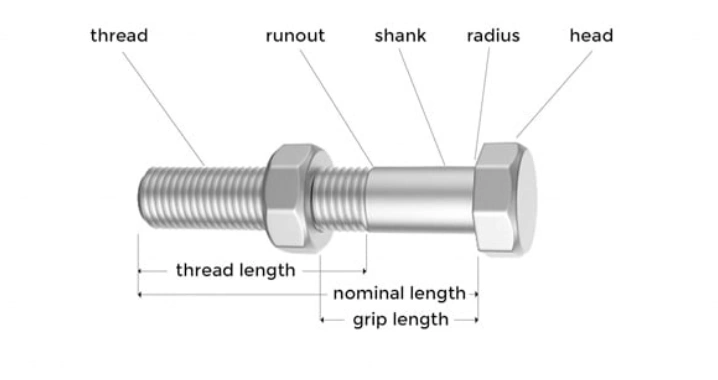
Parts of a bolt
The Bolt Head
The bolt head is the topmost part of the component. Whatever the shape of the head, the function of this part is to provide grip to tools used for fastening and unfastening. This part also helps sustain the axial forces generated by the joined parts.
The Bolt Body
This is the section of the bolt that extends from the head to the lower tip. It contains both the unthreaded and threaded parts, plust the tip of the bolt.
The Bolt Shank
Shank of a bolt refers to the unthreaded section of the body. Its function is to provide support to the installed bolt.
The Bolt Threads
There are different types of threads, but their function is the same – to provide the mechanical advantage required to lock and unlock the parts. Rotating the bolt creates movement within the threads and consequently, linear motion of the bolt.
The Nut
The nut is the “female” part of the bolt because it provides the clamping force for connecting two parts together. The axial force of the nut as it engages with the bolt creates compression of the joined parts. This generates compression force that further prevents the unscrewing of the bolt and the nut.
The Washer
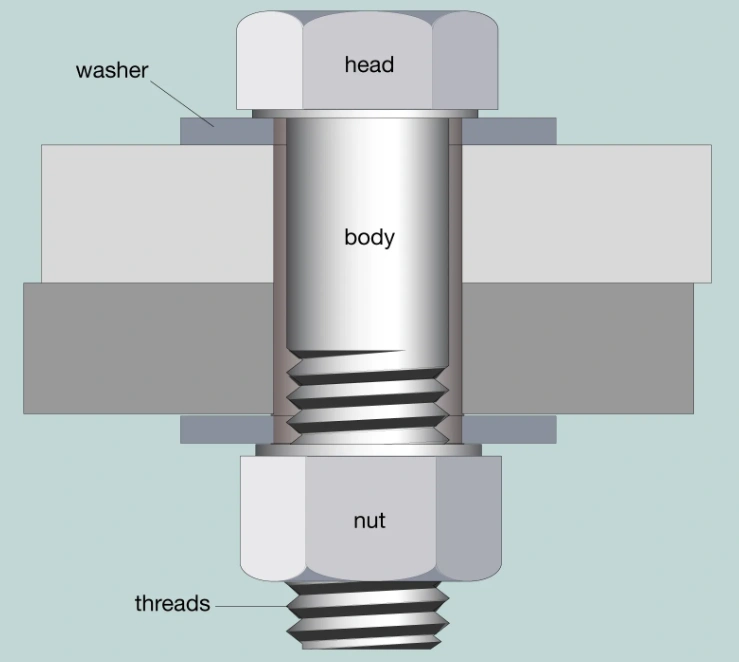
A washer
The washer refers to a thin disc-like component used in conjunction with the bolt and nut, laying in between the two parts in a fabrication scenario.
Although technically it is not part of the bolt, this component plays the crucial function of spreading the force evenly across the fabricated part to prevent deformation.
It can also be used to absorb vibrations that would otherwise cause the loosening of the joint. Further, washers can be used as waterproof seals for the joint.
Thread Pitch
This is the measurement from one point of a thread to a corresponding point on the next thread measured parallel to the axis. It determines the tightness between the bolt and the nut.
What Is The Difference Between A Bolt And A Screw?
Part of choosing the right bolt for the job is differentiating between a bolt and a screw. These fasteners are often mistaken, and this can affect project performance, especially when one type is ordered in place of the other.
The main difference between a bolt and a screw is that while a bolt works together with a nut, a screw works alone. You only need a preformed hole or none to use the screw – it can generate its own hole.
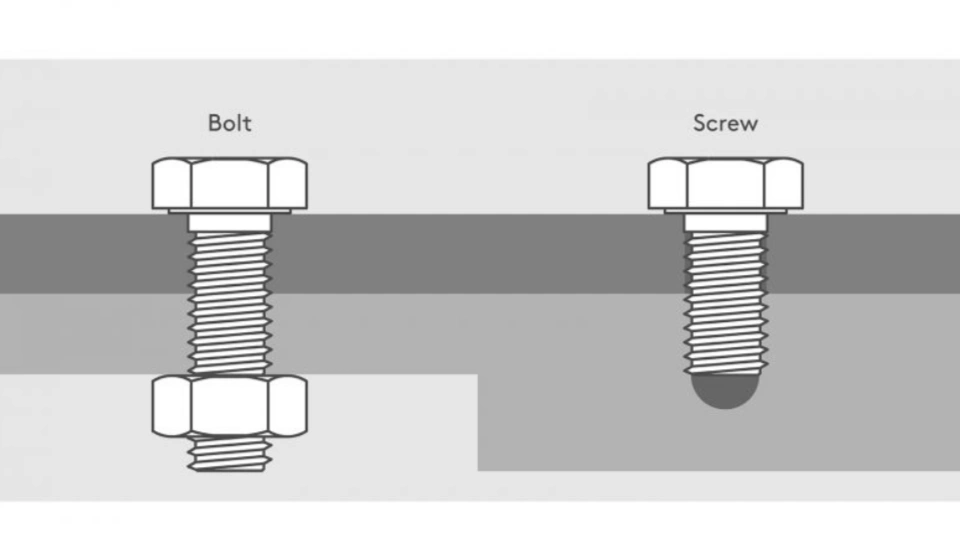
Bolt and screw
When the screw’s head is tightened, the component drives into the material and forms the desired joint.
Try Prolean Now!
What Are The Different Types Of Bolts?
Bolts are available in different shapes, sizes, and designs. One of the easiest ways to identify a bolt is by the shape of the head. The options in this case include domed, bent, square, and flat.
If you consider the applications and capabilities, types of bolts that emerge are arbor bolts, anchor bolts, blind bolts, and J bolts, among others. Each of these bolt types suits specific project requirements such as environment, load, and aesthetics.
Below is a types of bolts chart showing bolts based on head design with a highlight of the unique features of each.
Types Of Bolts Based On Head Design/Shape
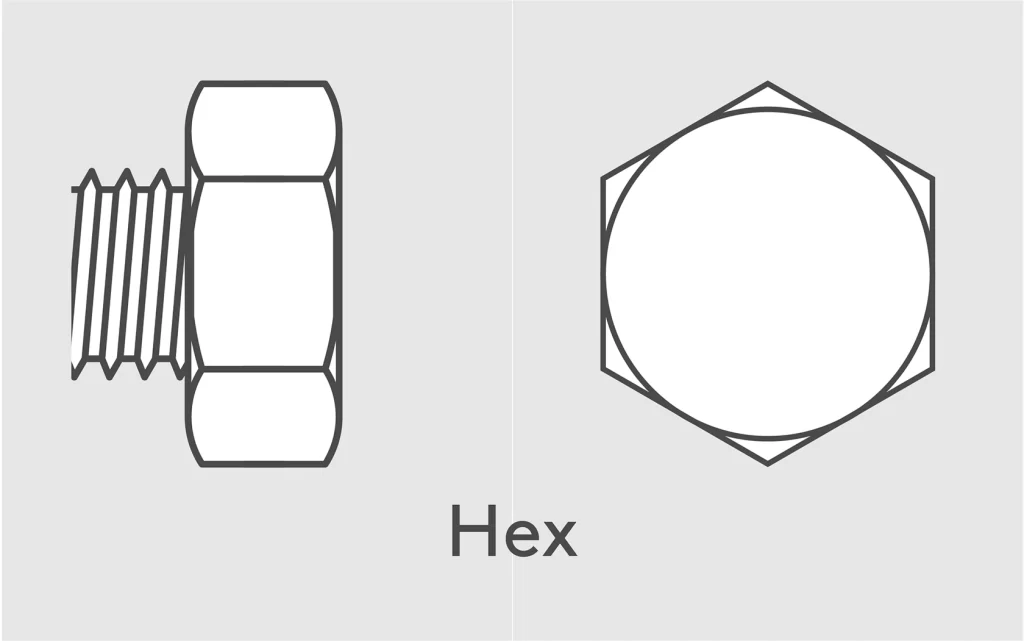
Hex
- Six sided and the most common type
- Usually robust and easy to install using standard tools
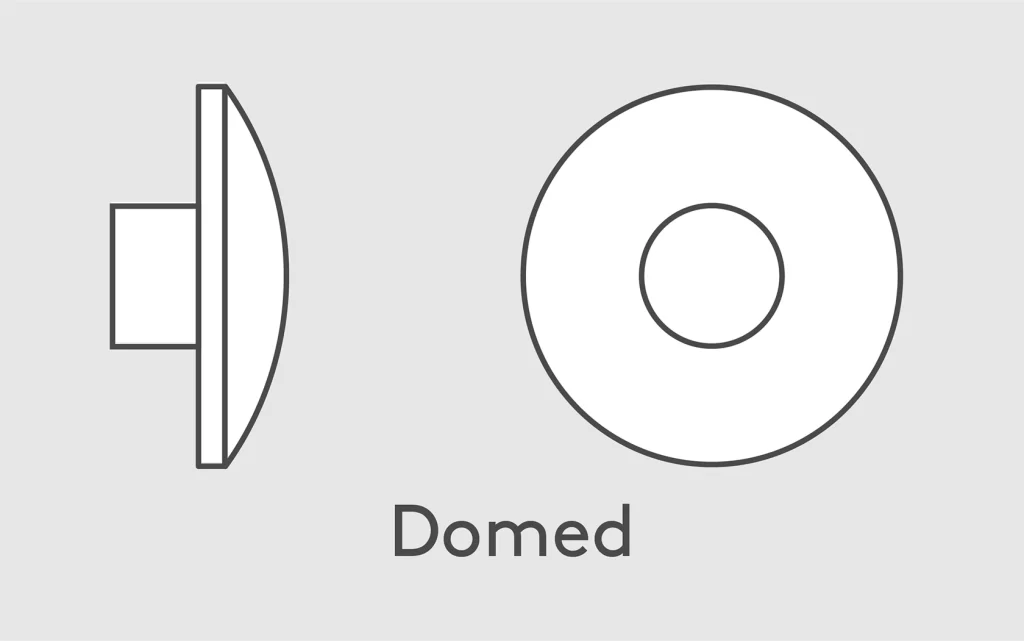
Domed
- Features a smooth domed head
- The head is safe and free from snagging
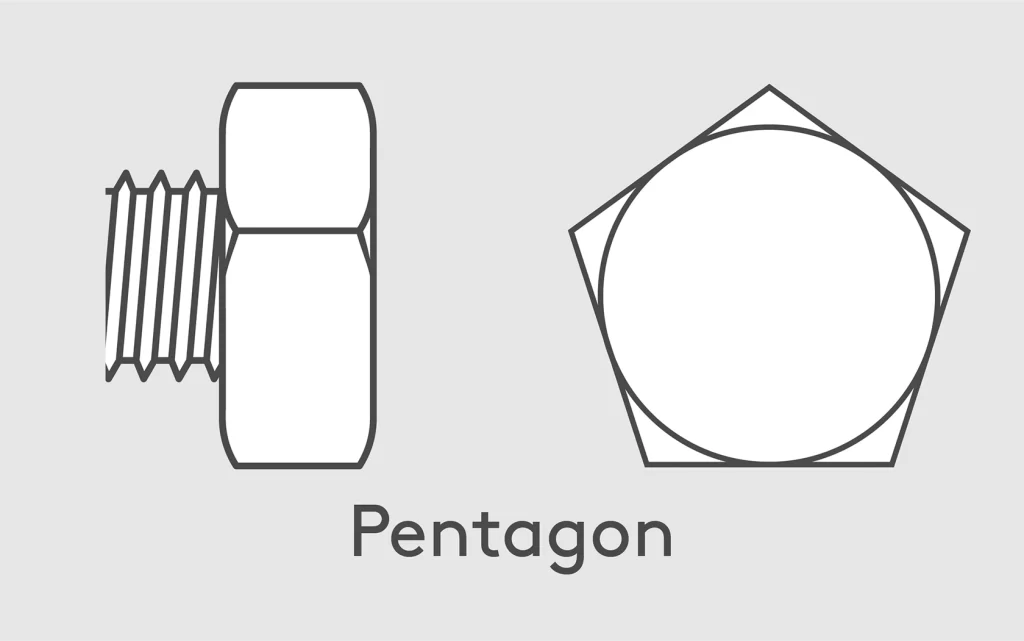
Pentagon
- Has a five-sided (pentagonal) head
- Requires a special tool to remove
- Important for enhanced security, aesthetics, and durability
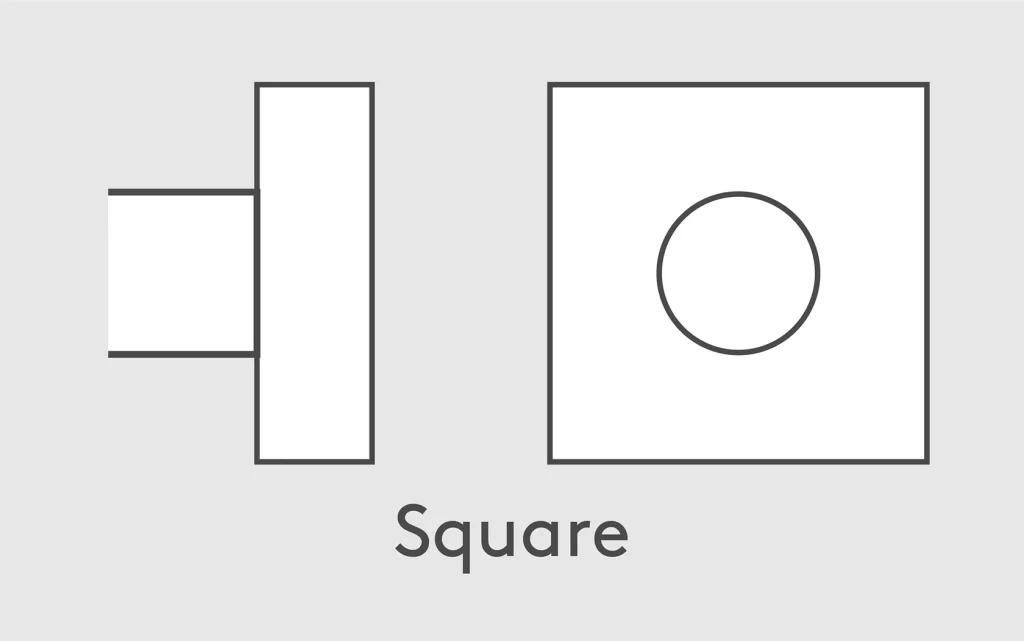
Square
- This type is four-sided
- Minimize loosening
- Work perfectly with a wrench
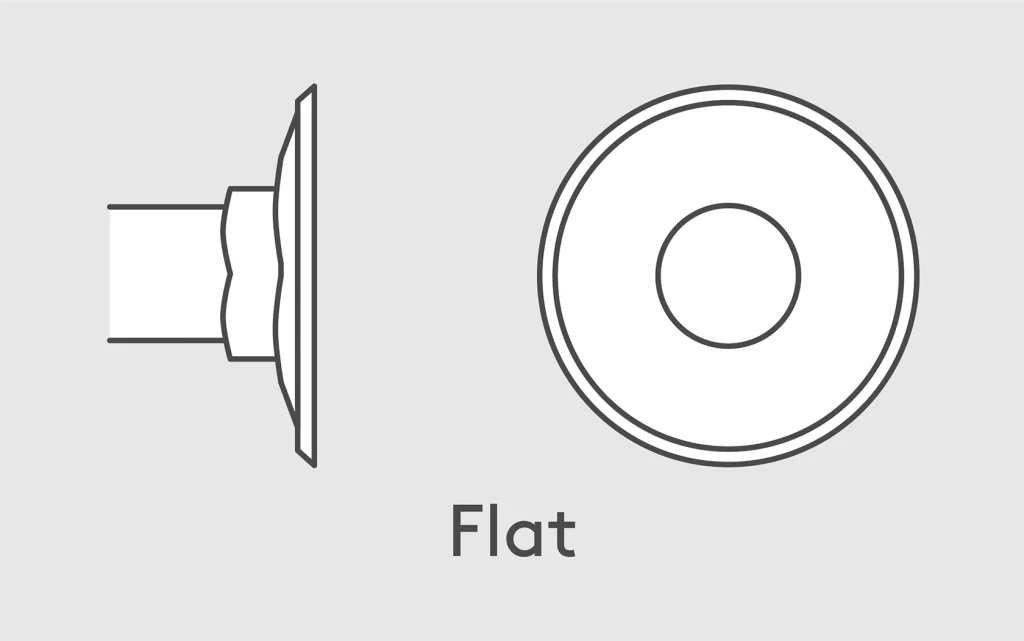
Flat
- Has countersunk head shape
- Ideal for space savings
Other Types of Bolts – Applications And Suitability
Considering the applications and suitability of thread types bolts, the types available include:
Anchor Bolts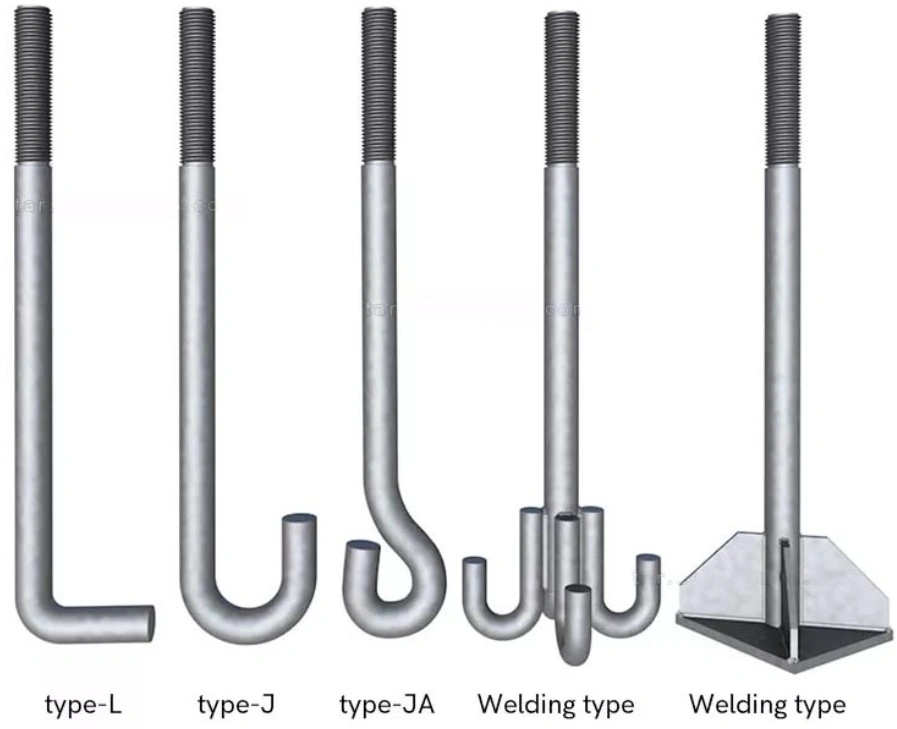
Anchor bolts
Anchor bolts are designed for attaching components to concrete. They may be L-shaped, J-shaped, and many other shapes. The bolts are mostly used in concrete surfaces or walls to secure heavy loads.
Arbor Bolts
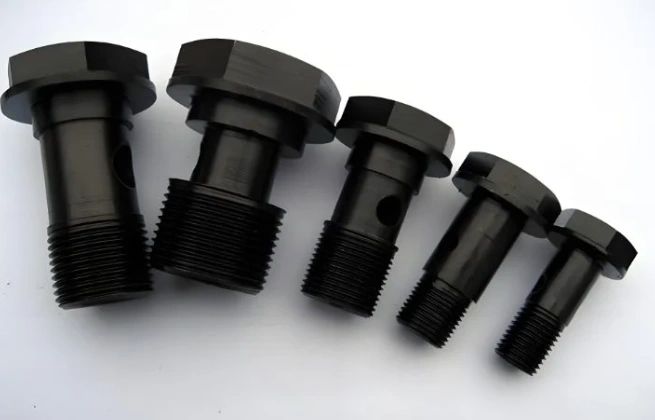
Arbor bolts
Arbor bolts are synonymous with rotating tools. Their most notable application is in fixing a rotating blade to the motor shaft. Their washer-shaped head is essential in ensuring tight connection for safety during operations, especially in cutting tools. They are designed for strength to withstand rotational forces.
Blind Bolts
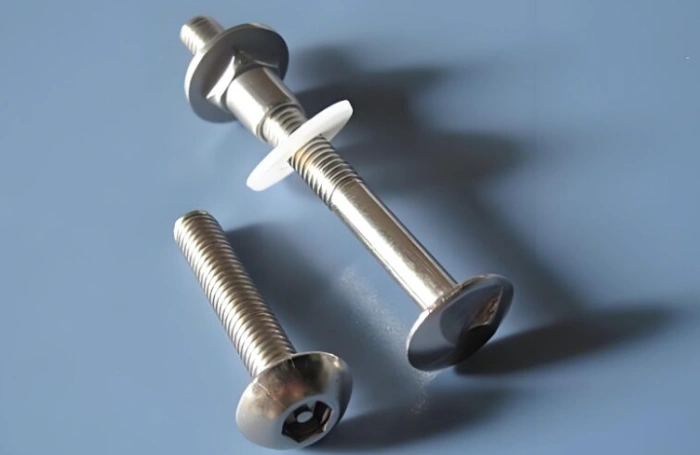
Blind bolts
Like the name suggests, these are unique bolts used where only one side of the parts being joined is accessible. They typically come as a set of a pin and a sleeve, lke the one shown above. When fastened, the sleeve and pin expand to make the bolt highly secure
Carriage Bolts
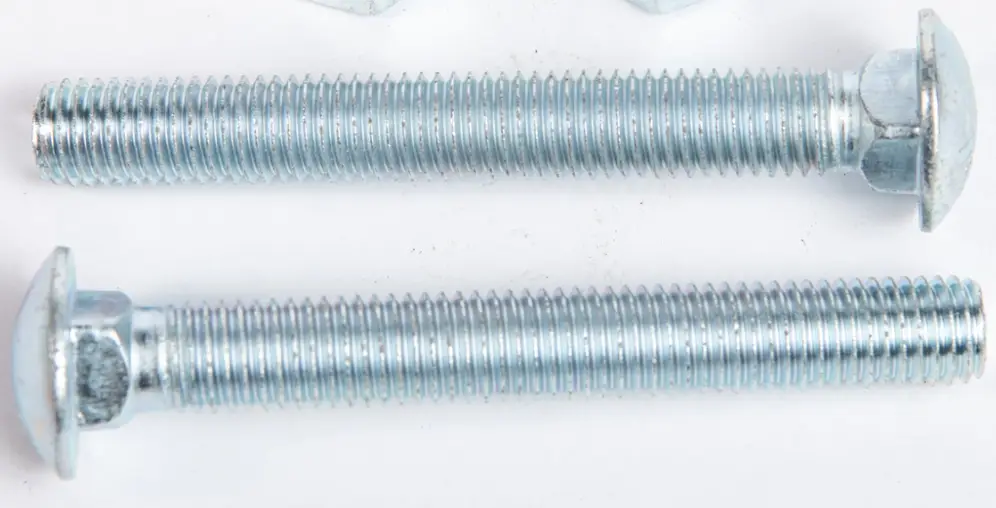
Carriage bolts
These are self-locking and have a dome-shaped head. Often used for hinges for enhanced security. The smooth head also enhances the visual appeal of the bolt, an element that makes sense in applications such as furniture. The flushing nature of the head is also valuable for the same reason.
Eye Bolts
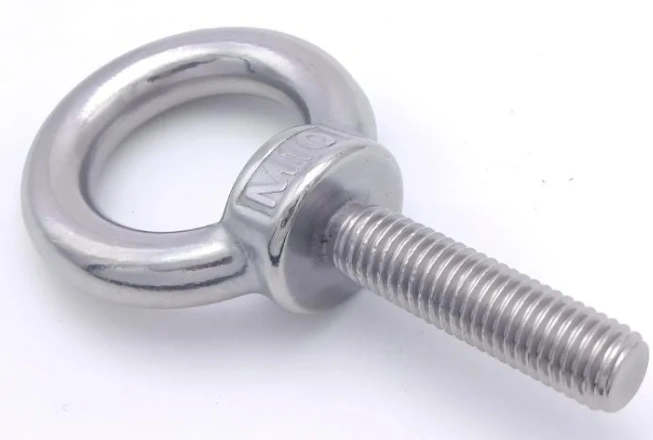
Eye bolt
These bolts are designed for lifting items. The looped head is specifically suitable for chains and cables, which are essential for transporting and hoisting items. Depending on the load requirements, applicable forms of this bolt include shoulder and non-shoulder designs.
Elevator Bolts
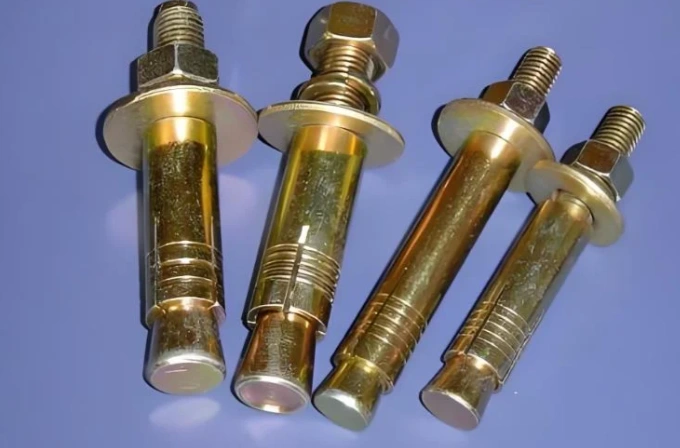
Elevator bolts
Elevator bolts, characterized by sizable circular heads, were initially designed for grain elevator systems, but they are now present in consumer goods and assembly lines. They are popularly used in machinery and conveyor systems. These bolts are designed to minimize wear and tear by being flush to the surface.
Hanger Bolts
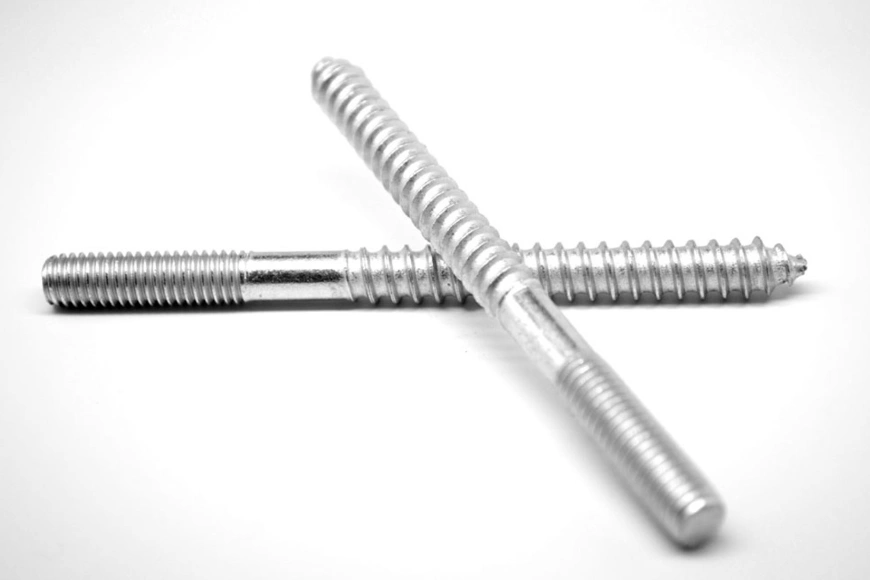
Hanger bolts
Their function is to connect to components while remaining invisible. They are common in suspended fixtures and related systems.
J Bolts
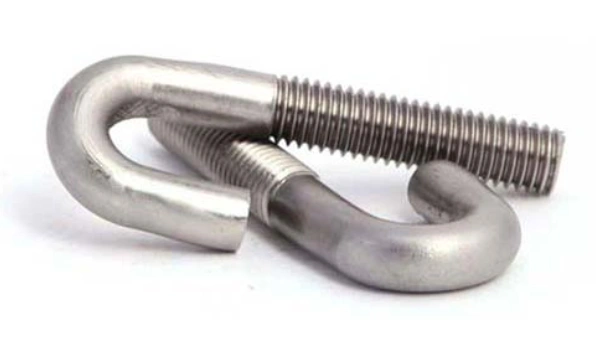
J bolts
These are hook bolts used in roofing and other construction applications. The bolts form excellent anchors for components on wood and concrete.
Lag Bolts
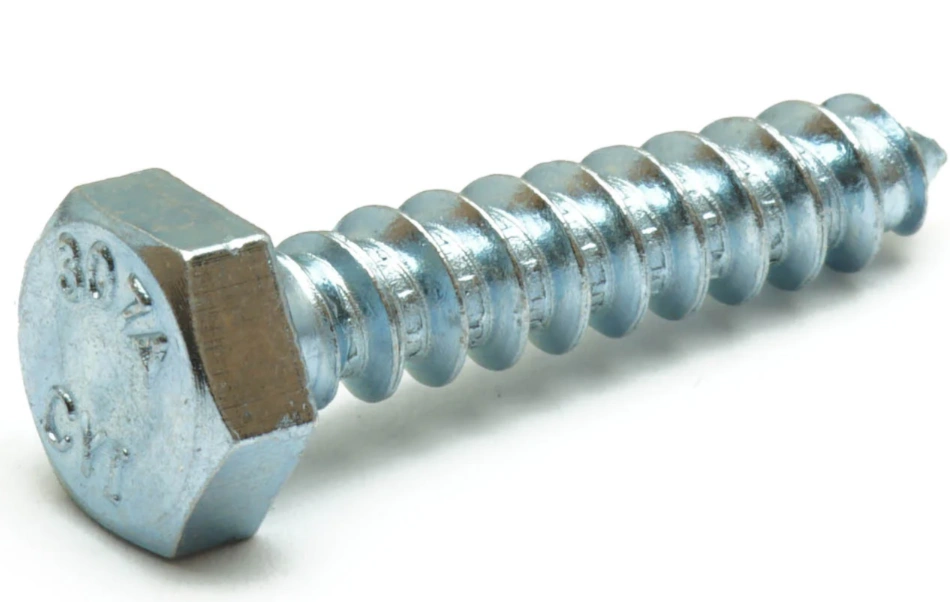
Lag bolt
They are mostly used in conjuction with wooden floors. The course body and hex head are perfect for wood applications where the reliable holding strength of the bolt comes in handy.
Other Types Of Bolts
Other types of bolts you may come across are Chicago bolts, double-end bolts, shoulder bolt, and U-bolt.
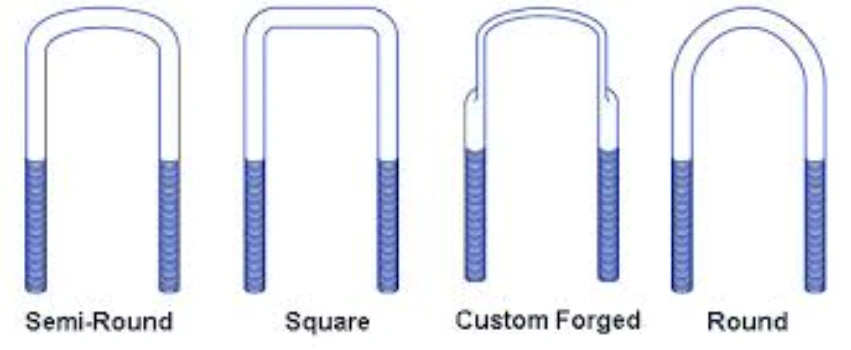
U-bolts
You can inquire about CNC machining services and learn more about the types of bolts the advanced machines can manufacture.
Try Prolean Now!
What Is A Bolt Made Of? The Main Materials For Types Of Bolts
Bolts can be manufactured from a range of materials, including steel, stainless steel, and titanium. The properties – weight, strength, corrosion resistance, cost, etc. – for each material determines its suitability in a specific project.
As experts at ProleanTech will tell you, choosing the right bolt material is as crucial as picking the right type, particularly for harsh environments. Below we discuss the uniqueness and relevance of these materials.
Stainless Steel Bolts
Stainless steel is a popular material for bolts because of advantages such as corrosion resistance, strength, and visual appeal. For such reasons, this material is recommended for fasteners in construction and manufacturing.
Titanium Bolts
The last few years have seen titanium bolts take different industries by storm. While as strong as steel, titanium is lighter. In other words, it has an impressive strength-to-weight ratio.
One of the areas that have adopted titanium, despite their high price, is construction. That’s because the non-reactive metal is not only strong and lightweight, but also corrosion resistant and highly versatile.
Brass Bolts
The durability and versatility of brass bolts is very attractive in construction and other industries. This material performs excellently where even distribution of clamping load is required. They are also corrosion resistant and strong, hence their presence in marine and automobile applications too.
Plastic Bolts
Plastic bolts are perfect for applications where metal bolts are undesirable – electrical insulation, corrosion resistance, etc. These can be produced in various sizes and shapes, and could also undergo CNC machining as part of the manufacturing process.
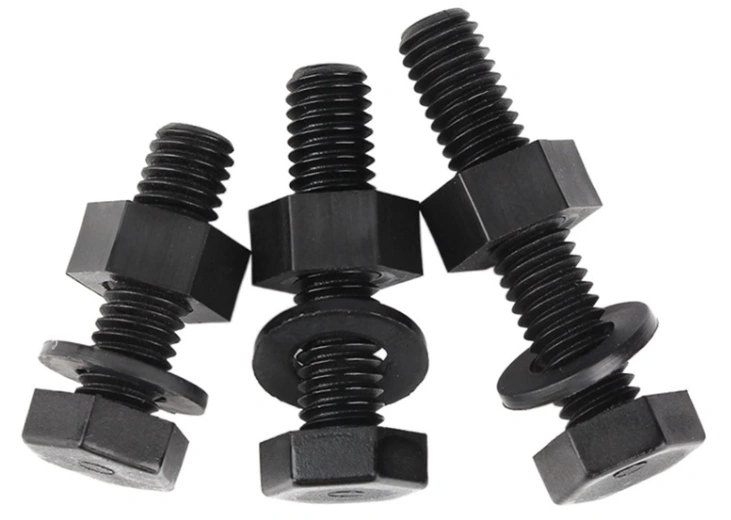
Plastic bolts
Plastic bolts are also attractive for their weather resistance, vibration damping properties, low weight, and temperature resistance.
Of course, you have to be careful what type of plastic you use to enjoy these and other advantages of plastic bolts.
How Bolts Are Manufactured
Bolts can be manufactured through cold forging, hot forging, and CNC machining. Whatever the manufacturing process for the bolts, considerations are made for strength, functionality, durability, and appearance of the product.
Typically, the process starts at the raw material selection stage, which is then followed by processing steps. Heat treatment and threading are often part of these steps.
As the following discussion of the steps reveals, every manufacturing exercise plays a part in enhancing the suitability of a bolt to its specific project requirements.
Let’s explore the manufacturing methods.
Cold Forging Of A Bolt
In the cold forging process, a material stock is put into a die and compressed into another die at room temperature. The high pressure helps form all the features of the bolt including the head and threads.
Hot Forging Of A Bolt
Bolts can also be forged, now in the presence of heat. The material stock is first heated to a specified temperature. It is then forced to compress between dies to take the predetermined shape of a bolt.
The bolt is ready for use after cooling and finishing .
CNC Machining Of A Bolt
CNC bolt machining is also another popular method of producing the fastener. The process is straightforward but requires expertise and advanced CNC machining equipment.
The raw material is first loaded onto the CNC machine, where it is given the fundamental bolt shape. This includes the head and threads. Advanced CNC machines with multiple axes can achieve a lot, for instance, drill holes in the bolt as may be required.
For more on the capabilities of this manufacturing method, go through this guide: CNC Machining Explained: Process, Techniques & Costs.
Coating And Finish Options For Bolts
After the CNC machining and other related production steps for the bolts, coating and finishing processes often ensue. These are important for the aesthetics and performance of these components. With so much experience in manufacturing, ProleanTech is also conversant with fastener coating and finishing.
Apart from preventing corrosion and wear, these processes are also part of adhering to industry standards.
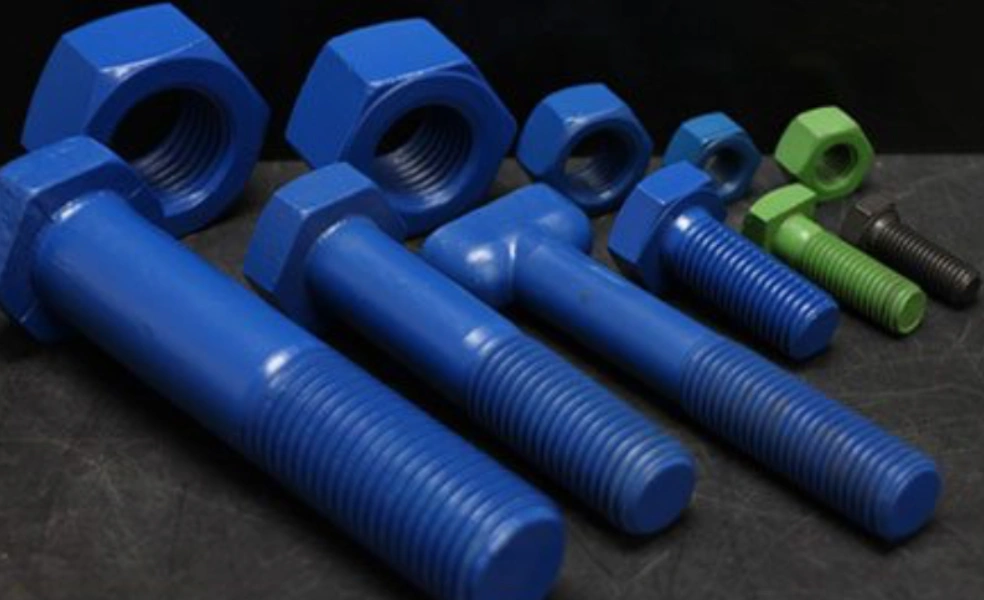
Coated bolts
Here are coating and finishing options for bolts to consider:
- Chrome plating
- Nickel plating
- Zinc plating
- Mechanical plating
- Hot Dipped Galvanizing (HDG)
- Gold plating
- Phosphate coating
Conclusion
Fastening is part of assembling and producing components. Bolts are part of these processes, and they come in different types as discussed. Understanding these types and their respective applications is the hallmark of quality products.
Overall, the quality of these products depends on the quality of manufacturing, including the CNC machining services. You can never go wrong with ProleanTech’s services.
Get your quote now for the best CNC machined bolts.
FAQ’s:
What are TC and SC bolts?
TC bolts and SC bolts refer to Tension Control bolts and Slip-Critical bolts respectively.
How to identify types of bolts?
You can distinguish types of bolts by their length, construction material, thread pattern, and head design. Further, manufacturer inscriptions on the bolt can give an idea about the type.
What is a bolt without a head called?
A bolt without a head is called a stud, which is characterized by threads on both ends.

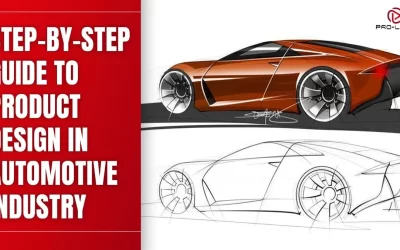
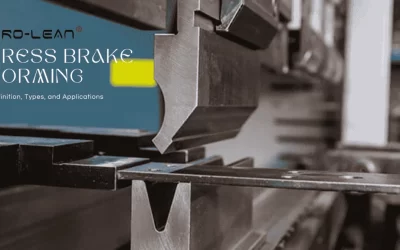
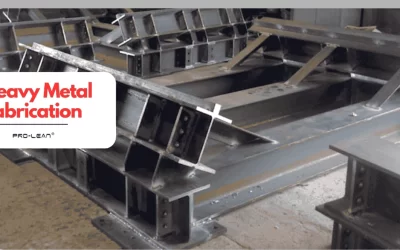
0 Comments